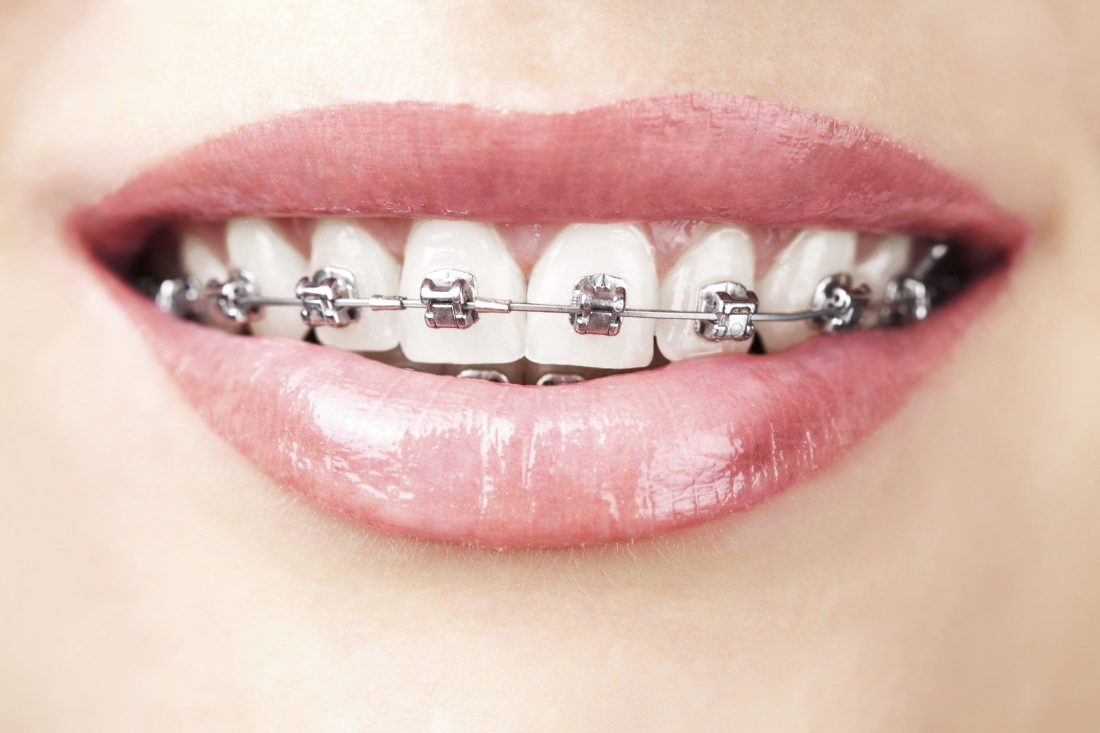Orthodontics is a reasonably old practice in dentistry that primarily involves correcting irregularities in teeth and jaws. Some standard orthodontic procedures include implants, aligners, braces, dental extraction, bonding, and orthognathic surgery. Here is a simple guide to orthodontic options for adults.

Braces
Braces are the most common appliance in orthodontics. They are used to correct misalignment and bite issues. The treatment involves using tooth brackets linked with elastic wires to move teeth to their desired position. Although braces use the same principles, there are different options with unique pros and cons.
Metal brace: This is the most common and oldest design. It comprises metal brackets linked with wires fitted to teeth. Unlike other orthodontic treatments, metal braces are inexpensive. They also offer predictable results and great outcomes in managing complex conditions says this expert dentist in Henderson. Unfortunately, metal braces are uncomfortable and make it difficult to eat and can impair speech. Furthermore, the brackets and wires are conspicuous.
Ceramic braces: These braces use clear/tooth-coloured ceramic brackets for an inconspicuous look. Although they are as effective as metal braces, the design is more brittle and prone to breakage.
Lingual brace: These follow the principles of traditional braces but have brackets on the posterior surface of the enamel. The braces are virtually invisible, giving them a unique appeal. Unfortunately, lingual braces are hard to clean, cause tongue irritation and cost more than standard braces.
Self-ligating braces: Unlike traditional braces that use elastic links, self-ligating braces have special clips that hold the wire. The braces are more comfortable and experience less friction.
Aligners
Also known as invisible braces, aligners are custom, transparent, removable braces that gradually align teeth. They come as a set of removable dental trays that progressively change the position of teeth. The transparent design makes aligners popular among users who desire visually inconspicuous treatment options. The braces are also comfortable and easy to use. However, the treatment outcomes depend heavily on patient compliance.
There are two types of aligners; in-office and at-home aligners. The former is set at the orthodontist’s clinic and adjusted after every visit. This reduces the risk of complications and improves success rates. Unfortunately, treatment with in-office aligners is expensive and inconvenient. On the other hand, at-home aligners are cheaper and more convenient. They are delivered to the user with a precise start date and usage instructions. The only downsides to at-home aligners are the higher risk of complications and lower success rates.
Orthodontics is a reasonably old practice in dentistry that primarily involves correcting
irregularities in teeth and jaws. Some standard orthodontic procedures include implants,
aligners, braces, dental extraction, bonding, and orthognathic surgery. For those seeking
expert care, Dr. Dhol provides expert orthodontics in Surrey, offering a range of treatments
to address various dental concerns. Here is a simple guide to orthodontic options for adults.
Accelerated orthodontics
This is a fairly new procedure in orthodontics, but it has received a lot of attention due to the quick results. Accelerated orthodontics combines surgical intervention with the use of braces or aligners. Soon after a patient has their braces fit, the orthodontist performs a minor procedure on the gums to ‘activate’ the tissue. This allows teeth to move into place faster.
Aside from the short treatment period, accelerated orthodontics provides great structural support to teeth. Furthermore, patients get to see results faster, renewing confidence and self-esteem. The surgical intervention in accelerated orthodontics is relatively minor and less invasive than jaw surgeries and tooth extractions used to manage overcrowding, missing teeth and misalignment.
Unfortunately, accelerated orthodontics is not for everyone. Smoking and pre-existing gum disease are a contraindication to the procedure due to the high risk of infection. Furthermore, the surgical intervention and its associated use of general anesthesia carry medical risks. It’s also an expensive and intensive treatment option as patients are subjected to numerous frequent appointments.
Bonding
This is a treatment option where the orthodontist applies a tooth-coloured resin to the enamel to change its shape, size or colour. Dental bonding is used to conceal cracks in teeth and close gaps to improve dentition. It also camouflages discolouration.
Dental bonding usually takes around an hour per tooth to complete. It involves simple steps, including material selection, tooth preparation, curing and polishing. It’s a painless, inexpensive procedure with immediate results. However, the treatment is not as long-lasting as other orthodontic procedures.
Orthodontics has invaluable benefits. It improves oral health by restoring good dentition and enhances cosmesis, which boosts confidence. If you are a candidate for any orthodontic procedure, talk to your dentist and start treatment. The results are sure to impress you.



